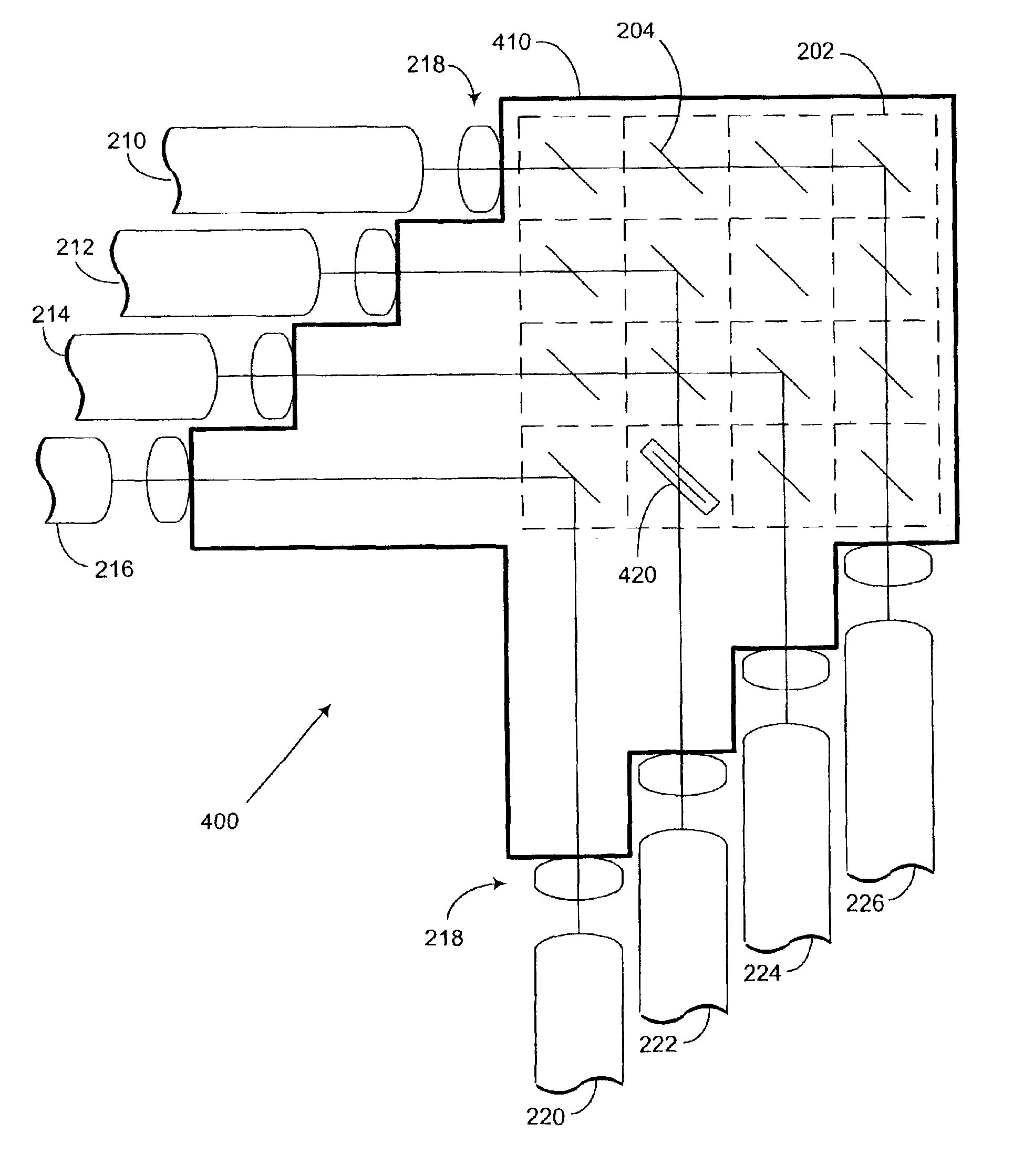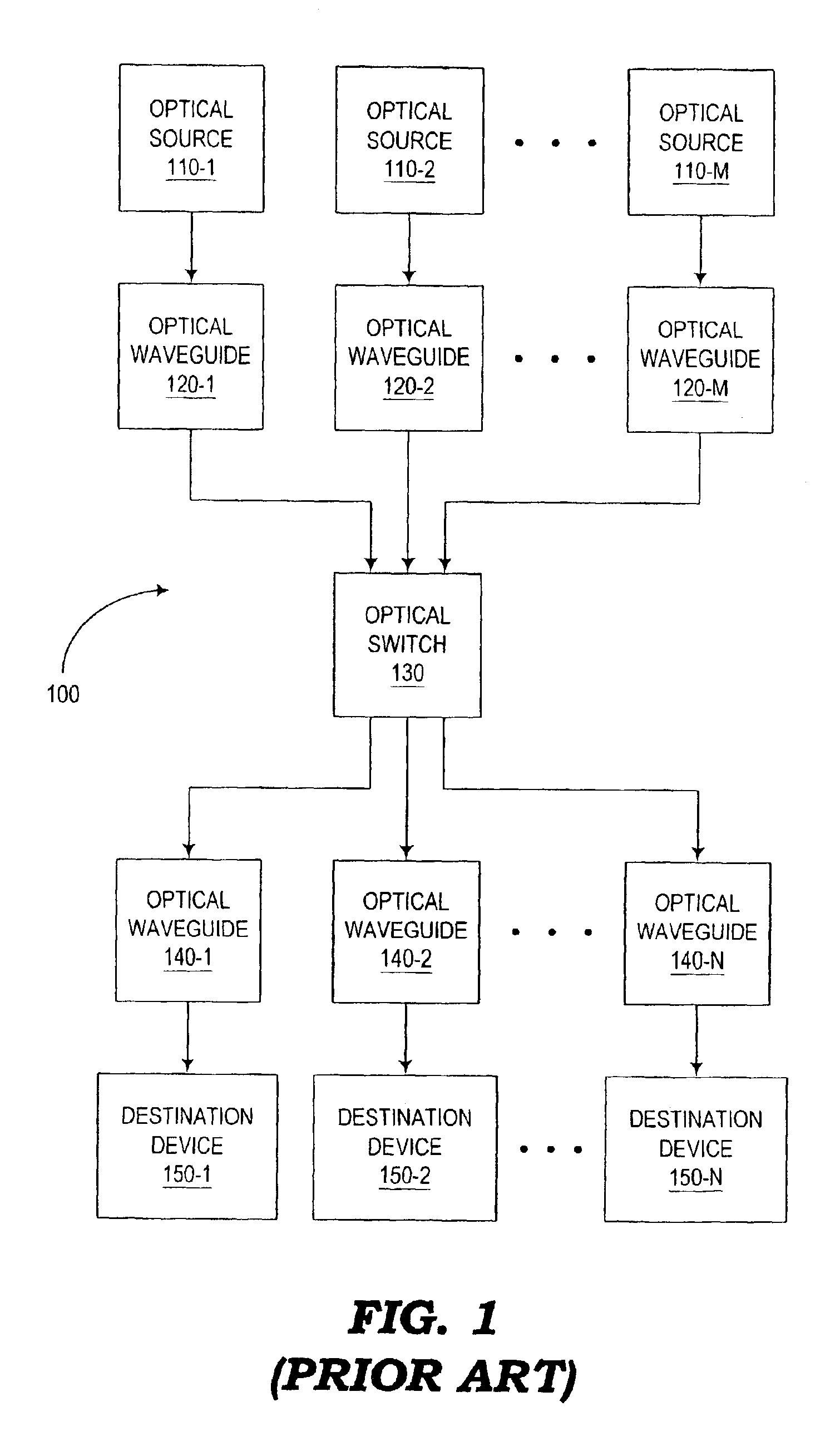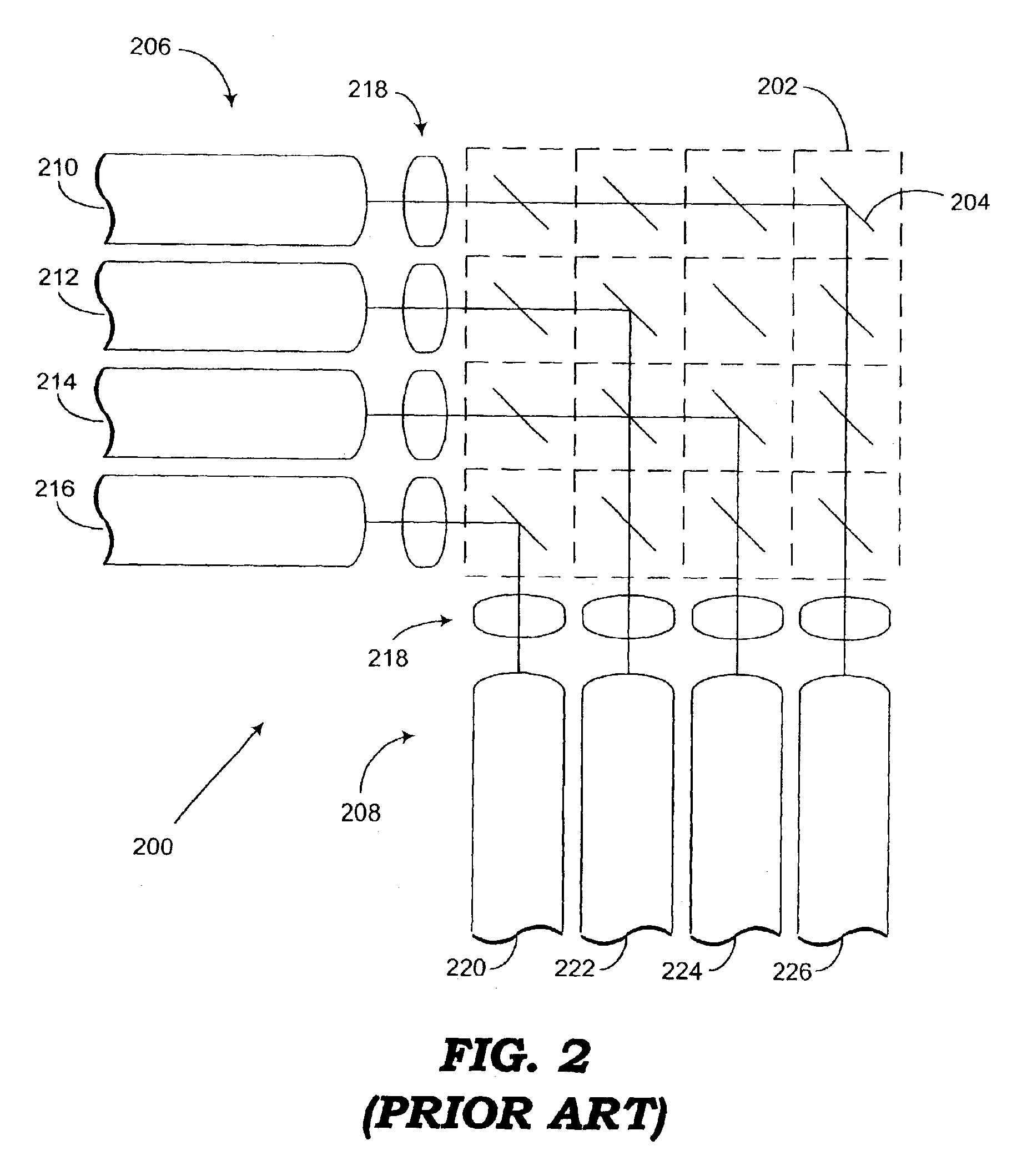Optical switch with reduced beam divergence
a technology of optical switch and beam divergence, applied in the field of optical communication, can solve the problems of aggravated beam divergence problems, difficult and costly manufacture and operation, and large angular beamwidth of beams, and achieve the effect of reducing beam divergence, significantly reducing beam divergence, and reducing beam divergen
- Summary
- Abstract
- Description
- Claims
- Application Information
AI Technical Summary
Benefits of technology
Problems solved by technology
Method used
Image
Examples
Embodiment Construction
[0024]FIG. 3 is an example of one embodiment of an improved cross-connect optical switch 300. Elements of optical switch 300 that correspond to elements of optical switch 200 are described above with reference to FIG. 2. The same elements are indicated by the same reference numerals and will not be described here. In addition to the common elements shown in FIG. 2, the optical switch 300 includes a refractive material 310 that fills the free space of the prior art optical switch 200. Optical signals propagate through the refractive material 310 from the input optical waveguides 210, 212, 214, 216, and are reflected by the activated micro-mirrors 204. The reflected optical signals further propagate through the refractive material 310 to the respective output optical waveguide 220, 222, 224, 226.
[0025]As shown in FIG. 3, the lenses 218 are positioned between the ends of the optical waveguides and the micro-mirrors 204. The lenses 218 are preferably positioned near or adjacent to an ou...
PUM
 Login to View More
Login to View More Abstract
Description
Claims
Application Information
 Login to View More
Login to View More - R&D
- Intellectual Property
- Life Sciences
- Materials
- Tech Scout
- Unparalleled Data Quality
- Higher Quality Content
- 60% Fewer Hallucinations
Browse by: Latest US Patents, China's latest patents, Technical Efficacy Thesaurus, Application Domain, Technology Topic, Popular Technical Reports.
© 2025 PatSnap. All rights reserved.Legal|Privacy policy|Modern Slavery Act Transparency Statement|Sitemap|About US| Contact US: help@patsnap.com



